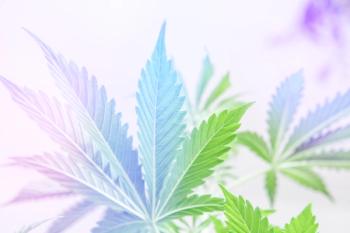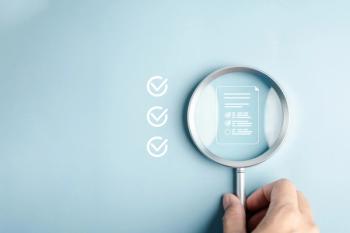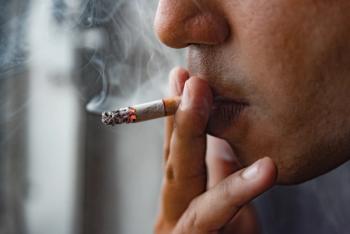
Well-Designed Aphasia Therapy Works
Intensive therapy over short periods provides better outcomes than less intensive regimens performed over longer periods." This was the take-home message about rehabilitation for patients with aphasia from Ronald M. Lazar, PhD, professor of clinical neuropsychology in neurology and neurological surgery, and codirector of the Levine Cerebral Localization Laboratory at the Neurological Institute of New York at Columbia University College of Physicians and Surgeons.
"Intensive therapy over short periods provides better outcomes than less intensive regimens performed over longer periods." This was the take-home message about rehabilitation for patients with aphasia from Ronald M. Lazar, PhD, professor of clinical neuropsychology in neurology and neurological surgery, and codirector of the Levine Cerebral Localization Laboratory at the Neurological Institute of New York at Columbia University College of Physicians and Surgeons.
Lazar was reiterating findings from the literature, which were primarily based on single-subject meta-analyses, during his presentation at the International Stroke Conference 2007 (ISC) in San Francisco February 7 to 9. He noted that randomized clinical trials (RCTs) of aphasia rehabilitation generally have not been favorable in regard to speech therapy because they don't take into account the nuances of aphasia treatment in individual patients.
"Problems exist in using RCTs to assess effectiveness of aphasia therapy," Lazar told the audience. "There are a number of interdependent factors affecting whether speech therapy works, including the nature and severity of the aphasia syndrome; the mode of therapy; cognitive issues, such as memory and executive function; existence of depression; physical illness that impedes ability to participate in therapy; and use of medications. Finally, the nature of the patient's support system counts as well," he said.
Lazar questioned whether RCTs for aphasia rehabilitation should be conducted at all. "Local outcome measures in clinical trials often do not reflect the goals of aphasia therapy. Therapy is based on treatment of specific linguistic processes, whether semantic, phonologic, orthographic, syntactical, or a combination. In clinical trials, we're looking at a single global measure of outcome. At the end of the trial, therapy might be effective but a treatment effect regarding a particular skill may be so small relative to the global outcome measure that no difference is seen from one treatment group to another," he explained.
To drive home his point, Lazar cited a study published in the Cochrane Database of Systematic Reviews in 2000 that analyzed 12 RTCs of language therapy.1 After noting that most of the trials were old and of poor methodological quality, the study authors concluded that an RCT had yet to show whether speech therapy for aphasia was effective.
But Lazar contends that despite equivocal RCT findings, the data are there. He cited a meta-analysis of 21 studies by Robey, who evaluated 3 classes of effects that dealt with treated recovery, untreated recovery, and treated versus untreated recovery.2 Robey's main finding was that degree of recovery among persons treated in the acute period was nearly twice that of untreated persons.
Treatment benefits seen
"Robey then added 24 additional studies to his meta-analysis and looked at 4 dimensions of treatment, which included amount and type of treatment and severity and type of aphasia.3 "What Robey found in the updated study was that the positive outcome for treated patients far exceeded that of untreated patients in all stages of aphasia," Lazar said. Findings reflected those seen in the first meta-analysis: the degree of improvement in treated patients was nearly twice that seen in untreated patients. Furthermore, rehabilitation therapy in excess of 2 hours a week resulted in greater improvement in a shorter time.
These findings were confirmed in a more recent analysis by Bhogal and colleagues4 that reviewed 10 studies on speech and language therapy for patients with aphasia following stroke. The analysis found that those studies that resulted in a significant treatment effect included a therapeutic protocol consisting of 8.8 hours of therapy per week for 11.2 weeks. In contrast, studies that resulted in lack of adequate treatment effect provided about 2 hours of therapy per week for 22.9 weeks.
According to Lazar, training needs to be designed in the following way: "Let us say there are 3 tests we want to teach," he said. "We evaluate level of function at the outset. We teach task 1 while probing tasks 2 and 3. If there is efficacy and specificity in teaching task 1, task 1 should improve but tasks 2 and 3 should not. Then, while probing the maintenance of task 1, we teach task 2 while probing task 3. The presumption is that while maintaining task 1, we're seeing results with task 2-and there should be no effect regarding task 3. Finally, we teach task 3 while probing the long-term effects of 1 and 2. By the end of teaching task 3, the patient is functioning well on all 3 tasks."
To arrive at a treatment effect for a specific task in evaluating outcomes, the baseline measure for the task is subtracted from that of the maintenance phase. The resulting measure is divided by the number of sessions. "Then you divide by the number of tasks, and you get an overall treatment effect," said Lazar.
ENDURING BUT TREATABLE SYNDROME
"About a million persons in this country are aphasia survivors," reported Lazar. "The majority of aphasia episodes are associated with stroke, and the majority of stroke-related aphasia episodes are associated with ischemic lesions." Furthermore, aphasia is an enduring syndrome. Aphasia persists in about 79% of patients after 1 year, according to Lazar. "We see full recovery in a fifth of patients with stroke-associated aphasia, compared with about half of patients whose aphasia is associated with trauma," he commented.
Global aphasia is the most frequent type seen in the aftermath of first-time strokes.5 "The older you are, the more likely you will have a global aphasia after stroke, and the younger you are, the more likely you will have a focal syndrome," said Lazar. "The most notable change over time is seen with global aphasia, but whether affected by a global or focal syndrome, patients tend to get better to some extent, although residual effects remain."
Improvements are related to the type of aphasia experienced. A study by Pedersen and colleagues5 demonstrated that the severity of aphasia always lessened over the course of a year. Nonverbal aphasia could evolve into verbal aphasia (eg, Wernicke, Broca, or anomic) and persons with verbal aphasia were not at risk for progressing to nonverbal forms of aphasia. The study also found that outcomes depended more on aphasia and stroke severity than on age, sex, or type of aphasia, leading the authors to remark that stroke severity scoring is useful in prognosis and in designing treatment protocols.
A recent study by Moss and Nicholas6 suggested that time was not necessarily of the essence in initiating aphasia therapy. Whereas the contention has been that improvement is most easily achieved in the first year post-stroke and is more challenging later, when aphasia is deemed to be a chronic condition, the researchers showed-through an extensive literature review analysis-that outcomes are not necessarily dependent on when treatment is initiated.
The rate of maximum possible change (MPC) from baseline scores for verbal output and auditory comprehension ranged from 47% at 1 to 2 years post-stroke, to 51% at 4 to 6 years, to 42% at 6 to 8 years. Evidence suggested that treatment response might decline after 8 years post-stroke, however, the rate of MPC dropped to 28%.
INTERVENTION
"Where is therapy going?" Lazar asked. "New language therapy such as speech-constrained language therapy-whereby patients are forced to speak rather than use compensatory strategies such as gesture, and 'errorless learning,' so that the fewer errors patients make, the more enduring the treatment-are gaining popularity," he said. Repetitive transcranial magnetic stimulation and transcranial direct current stimulation also are being used, he said.
"Combining biological and behavioral treatments is most useful," he added. Although the value of pharmacotherapy in aphasia has been questioned despite many years of study,7 Lazar remarked that combining pharmacological and behavioral techniques was probably a good way to proceed.
Two pharmacological agents that may be of benefit in aphasia therapy are piracetam, which is not available in the United States, and donepezil (Aricept). Numerous studies, dating back to the 1980s, have suggested that piracetam may be of value in aphasia8-a point that was covered by Laura Lennihan, MD, associate professor of clinical neurology at Columbia University in New York, in a related presentation in the same ISC symposium in which Lazar participated.
One of the more recent studies, authored by Kessler and colleagues,8 showed that while control (placebo) patients improved in written language and comprehension measures, patients receiving piracetam showed significant improvement in written language, naming, comprehension, spontaneous speech, verbal communication behavior, and semantic and syntactic speech structures. Positron emission tomography data showed significantly increased activation in the left transverse temporal gyrus, left superior gyrus (Wernicke region), and the Broca region of the left frontal gyrus in treated patients. In comparison, significantly increased activation was only detected in the infe- rior part of the left precentral gyrus-which controls vocalization-in controls. All patients participated in intensive language therapy as well as occupational therapy and physiotherapy.
A more recent double-blind RCT by Berthier and colleagues9 cited by Lennihan, suggested that donepezil might be of value for stroke patients with chronic (ie, lasting 1 year or longer) aphasia. Greater improvements were seen in Western Aphasia Battery and Psycholinguistic Assessment of Language Processing in Aphasia scale scores in treated patients compared with controls (6.4 vs 3.5 and 4.6 vs 21.0, respectively). However, differences between the groups were not sustained once treatment was discontinued, suggesting that donepezil provides a transient rather than persistent treatment effect. Patients only received 2 hours per week of standard language therapy in this study.
"Speech language therapy is effective when outcomes are specific," concluded Lazar. "Therapy is most effective when initiated during the acute phase but is still effective during the chronic period. Advances in treatment will likely depend on melding biological and innovative behavioral techniques."
References:
REFERENCES
1. Greener J, Enderby P, Whurr R. Speech and language therapy for aphasia following stroke. Cochrane Database Syst Rev. 2000;(2):CD000425.
2. Robey RR. The efficacy of treatment for aphasic persons: a meta-analysis. Brain Lang. 1994;47:582-608.
3. Robey RR. A meta-analysis of clinical outcomes in the treatment of aphasia. J Speech Lang Hear Res. 1998;41:172-187.
4. Bhogal SK, Teasell R, Speechley M. Intensity of aphasia therapy, impact on recovery. Stroke. 2003;34:987-993.
5. Pedersen PM, Vinter K, Olsen TS. Aphasia after stroke: type, severity and prognosis. The Copenhagen aphasia study. Cerebrovasc Dis. 2004;17:35-43.
6. Moss A, Nicholas M. Language rehabilitation in chronic aphasia and time postonset. A review of single-subject data. Stroke. 2006;37:3043-3051.
7. Small SL. The future of aphasia treatment. Brain Lang. 2000;71:227-232.
8. Kessler J, Thiel K, Karbe H, Heiss WD. Piracetam improves activated blood flow and facilitates rehabilitation of poststroke aphasic patients. Stroke. 2000;31:2112-2116.
9. Berthier ML, Green C, Higueras C, et al. A randomized placebo-controlled study of donepezil in poststroke aphasia. Neurology. 2006;67:1687-1689.
Newsletter
Receive trusted psychiatric news, expert analysis, and clinical insights — subscribe today to support your practice and your patients.















